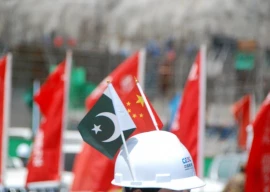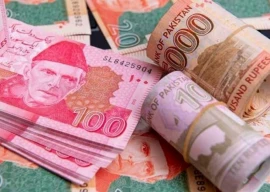
In response, the Pakistani government spokesman said “although Pakistan is helping the United States in restoring peace in Afghanistan, when we talk about the FTA, it is very difficult as it takes five to seven years.”
The reality is different. Average time for the US to conclude is merely 18 months. There are many cases where FTAs were concluded in a short time. For example, the US-Jordan FTA took only four months. Similarly, in case of Bahrain and Oman, it took seven and 10 months respectively.
The longest the US has taken to conclude any of its 14 FTAs is the one with Panama, which took 38 months from the beginning of negotiations to the signing of an agreement. Of course, once an agreement is concluded, it could take some time for its implementation. The average time span is 45 months.
The US-Jordan FTA can serve as a good precedent. Jordan got the FTA as a reward for playing a constructive role in achieving Oslo Accords between Israel and Palestine in 1993. Now, Pakistan is being asked to play a similar role in bringing Taliban to the negotiating table and signing a peace agreement to enable the US to exit Afghanistan.
Pakistan is already playing an important role but as in the past it may miss the chance to translate this opportunity into any long-term trade gains for itself.
Pakistan lost a good opportunity when it sided with America in the aftermath of 9/11 attacks. It could have pressed hard for an FTA but instead settled for military and other financial aid. Now, the present opportunity should not be allowed to slip away. Aid is short-lived whereas trade is beneficial in the long term.
After Jordan signed the FTA with the US, several large American companies established factories in that country to avail duty-free access. Within five years after the FTA, Jordanian exports to America increased twentyfold.
Although Jordan had no previous record of exporting textiles and clothing to the US, now exports of these products exceed $2 billion.
The US is already Pakistan’s top most export destination with exports of about $3.56 billion or more than twice as much as the second placed country, the United Kingdom with $1.63 billion or the third place export destination, China with $1.5 billion.
If through the FTA, import duties averaging 10-16% could be removed from Pakistani products, it could easily double exports to the US in a short time. On the other hand, exports of the US to Pakistan are about $2.85 billion as compared to China’s exports of $15.38 billion or the UAE’s $7.52 billion. These consist of products such as soybean, aircraft and railway vehicles, cotton, seeds, etc, which pose no threat to either Pakistan’s industry or revenue.
Trade deficit shrinks 5% to $16.8b as imports go down
Another benefit of having an FTA with the US would be to bring more direct investment. In 2017, US foreign direct investment in Pakistan was $518 million, which was just a fraction of its investment of $44 billion in India in 2017.
Any jump in FDI from the US would not only greatly increase employment opportunities, but will also help with Pakistan’s external-sector issues.
Pakistan has to realise that the window of opportunity is very narrow. Once the US withdraws from Afghanistan, it may be too late. Also expiring in July 2021 is the US president’s trade promotion authority under which the American leader has the mandate from Congress to negotiate trade deals.
Trade deficit slightly contracts to $14.5b in five months
It is, therefore, essential that Pakistan plays a proactive role and do the necessary. It should insist on parallel negotiations for an FTA when the Taliban-US negotiations are taking place.
At the same time, Pakistan has to be ready with its preparatory work. So far Pakistan’s FTAs and Preferential Trade Agreements have been very sketchy, which only covered goods and services. On the other hand, if the US agrees to have an FTA with Pakistan, it would ask for a comprehensive agreement covering issues relating to labour and environment.
Pakistan needs to be ready if such an opportunity comes its way. It needs to clearly identify its objectives. It has also to realise that success is where preparation and opportunity meet.
The writer served as Pakistan’s ambassador to the WTO from 2002 to 2008
Published in The Express Tribune, February 25th, 2019.
Like Business on Facebook, follow @TribuneBiz on Twitter to stay informed and join in the conversation.

1730360426-0/Menendez-Brothers-(2)1730360426-0-165x106.webp)





















COMMENTS
Comments are moderated and generally will be posted if they are on-topic and not abusive.
For more information, please see our Comments FAQ